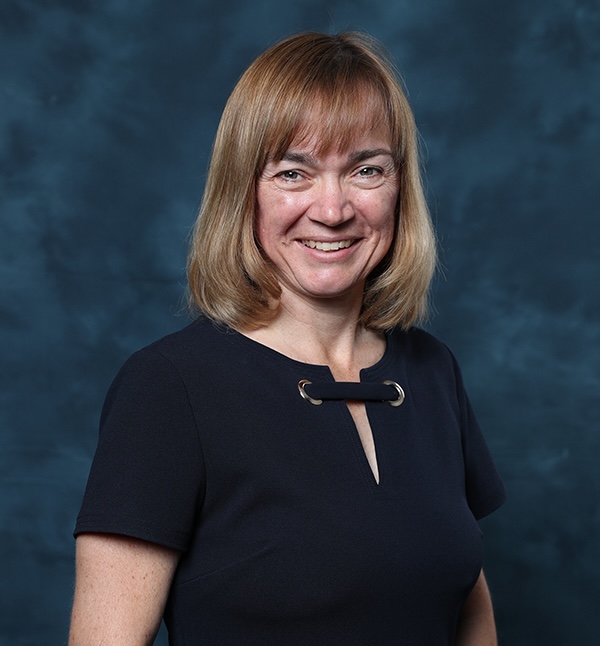As we celebrate Women’s History Month this October, it is important to recognize the increasing role women are playing in industries traditionally dominated by men, such as capital projects. From construction sites to boardrooms, women are carving out spaces, demonstrating leadership and driving innovation. At the forefront of this movement is Sandra MacGillivray, Managing Director at Valency Inc., whose career and leadership journey offers insight into the evolving landscape of capital projects.

Breaking into the Industry: The Early Days
Sandra’s interest in capital projects began long before she officially entered the industry. “Even in high school, I was doing science fair projects on innovative ideas like alternative energy,” she recalls. That early passion eventually led her to study science, and from there, into a successful career in software before founding Valency.
While many might see her transition from software into capital projects as a leap, for Sandra, it felt natural. “I was always driven by the question: How do you drive innovation in infrastructure? That led me to the CII research and, ultimately, to start Valency. I knew there had to be a better way to manage capital projects.”
The Changing Landscape for Women
While Sandra has not personally encountered significant barriers as a woman in capital projects or more specifically, capital project management, she acknowledges that this has not been the case for everyone. “I’ve been fortunate to work in environments that have been respectful and supportive. But colleagues ten years older than me certainly had different experiences. The industry has shifted, and I think the opportunities today are greater.”
This progress is a testament to the collective efforts to create a more inclusive and supportive industry for future generations of women, though challenges remain. While male project managers still outnumber females globally by 3:1, women are increasingly stepping into leadership roles and making their mark.1 The shift has not happened overnight, but it is the result of concerted efforts by industry leaders and organizations committed to diversity and mentorship.
The Power of Mentorship
One of the most striking themes from Sandra’s journey is the critical role mentorship has played. “Mentorship was one of the biggest things that changed my career trajectory,” Sandra says. Whether it is formal or informal, she believes that mentorship provides the guidance and confidence necessary to thrive in a complex field like capital projects.
“You don’t want the next generation feeling like imposters in their own roles. That’s where mentors come in.”
Sandra’s experience echoes findings in the broader industry. A lack of access to mentors and sponsors has been cited as one of the significant barriers to women advancing in capital projects and capital markets.2 Ensuring that women have access to these relationships is essential for fostering a more diverse and robust workforce.
Promoting Women in Capital Projects
Sandra is clear: promoting women in capital projects is not about lowering standards—it is about creating environments where women can thrive. She emphasizes the importance of focusing on skills and teamwork. “You don’t have to only be an engineer to make a significant impact,” she notes. “There’s room for everyone, even those who understand business, operations, and economics to drive innovation and transform project management.”
Her approach aligns with research showing that gender-diverse organizations often experience better retention and profitability. Promoting women into leadership roles benefits both the industry and business outcomes. Sandra’s strength lies in uniting diverse voices, reshaping Valency’s consulting approach, and delivering smarter solutions with stronger team alignment.
Sandra has never viewed being a woman as a barrier. “I’ve always felt that there are big problems to solve, and they need people with ambition and motivation to solve them,” she says. Her focus on ambition, rather than gender, has fueled her success in the industry, and her advice to others is simple: “If you want to solve big problems and make a huge impact for your country, this is an industry where you can make it happen.”
A Call to Action for the Future
As more women enter the capital project workforce, creating an inclusive and supportive environment becomes even more critical.
While the gender gap in capital projects persists, Sandra’s story—and those of other women in the field—demonstrates that progress is being made. “We’ve come a long way, but there’s still much more to do. The future of capital projects is one where women will not just participate but lead.”
“There has to be a better way to manage capital projects, and that’s why I started Valency.”
As we look ahead, it is clear that the capital project industry will continue to benefit from the contributions of women like Sandra, who are shaping its future—one project at a time.
Conclusion
This Women’s History Month, let’s celebrate the strides women have made in capital projects and commit to fostering environments where their contributions are not only welcomed but valued. By promoting mentorship, challenging stereotypes, and focusing on skills, we can ensure that more women see themselves as leaders in this evolving industry.
References
1 “The State of Women in Project Management, 2023.” Project Management Institute (PMI), Apr. 2023, pmi.org/learning/thought-leadership/women-in-project-management-2023.
2 officebureau. “8 Ways Women Can Advance in Capital Markets | Advisor.ca.” Advisor.ca, 26 June 2012, www.advisor.ca/industry-news/industry/8-ways-women-can-advance-in-capital-markets/. Accessed 20 Sept. 2024.
